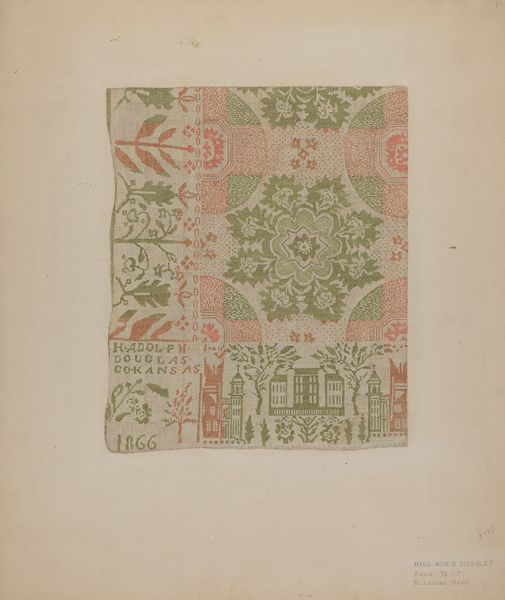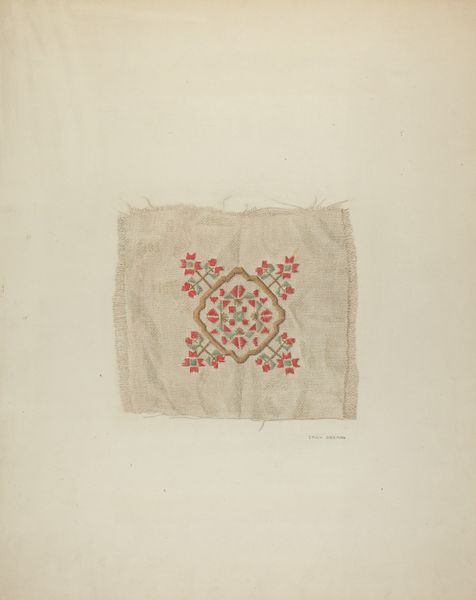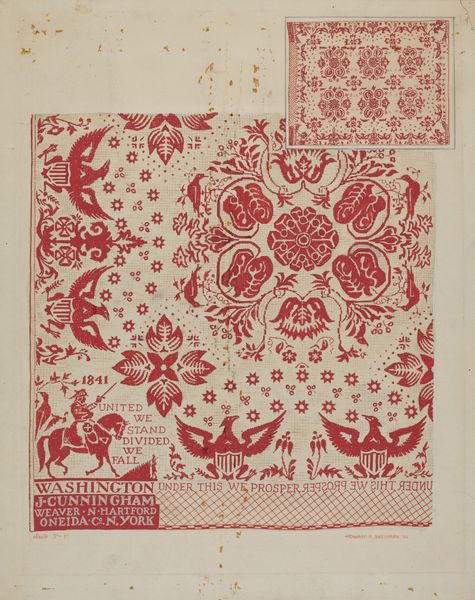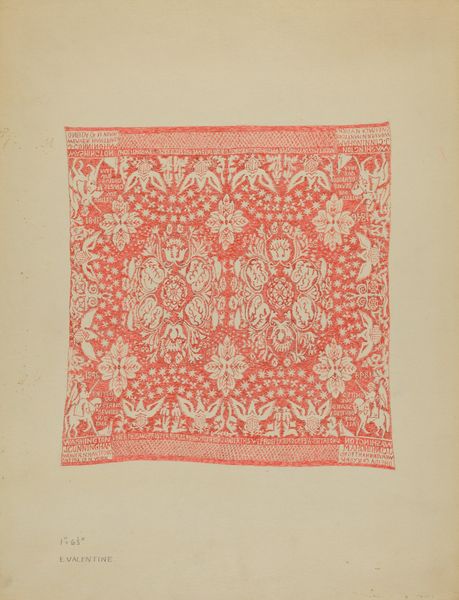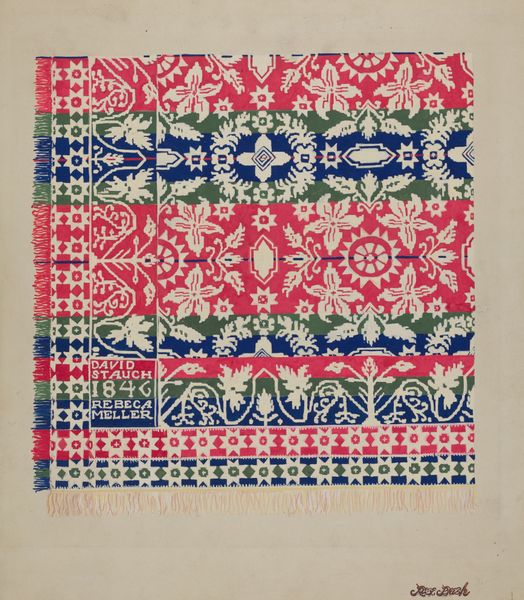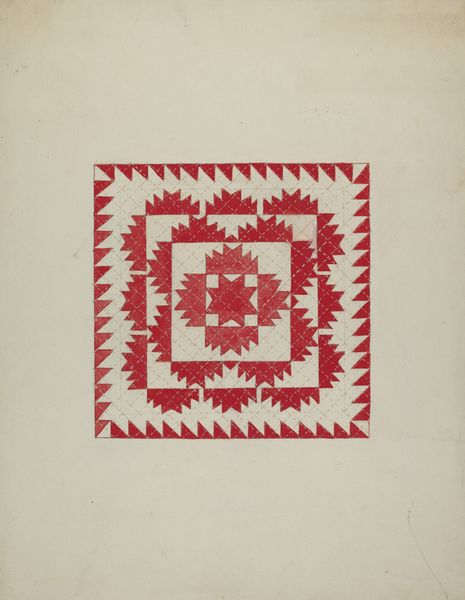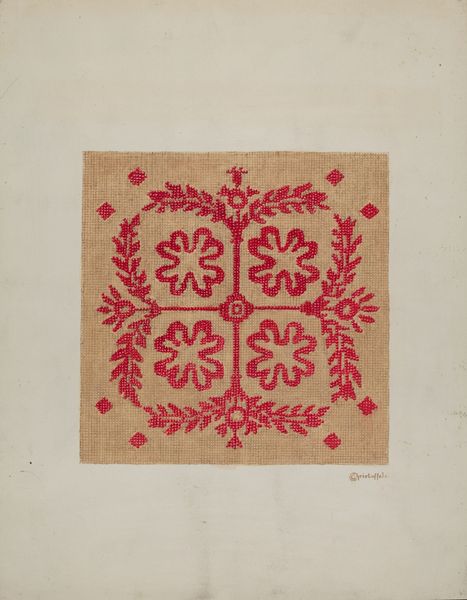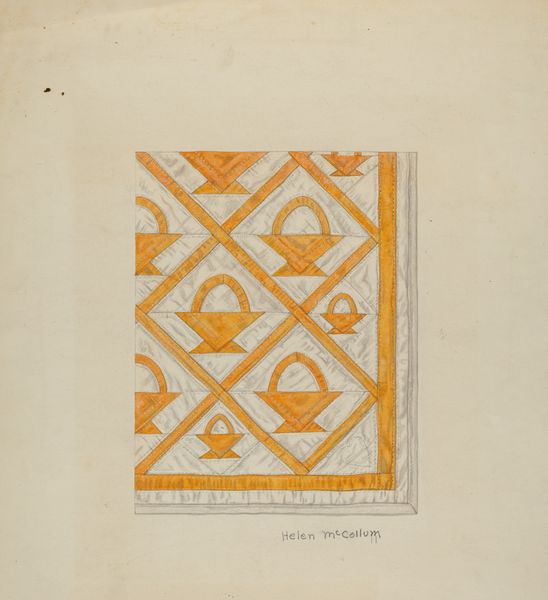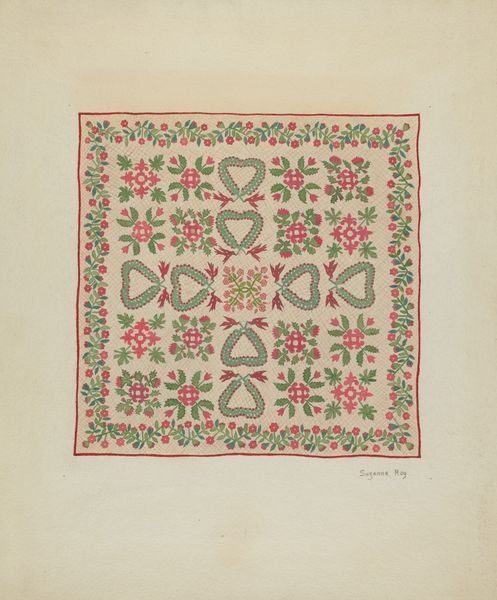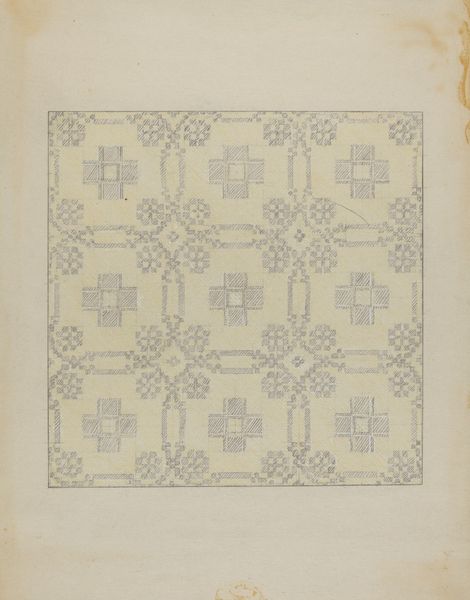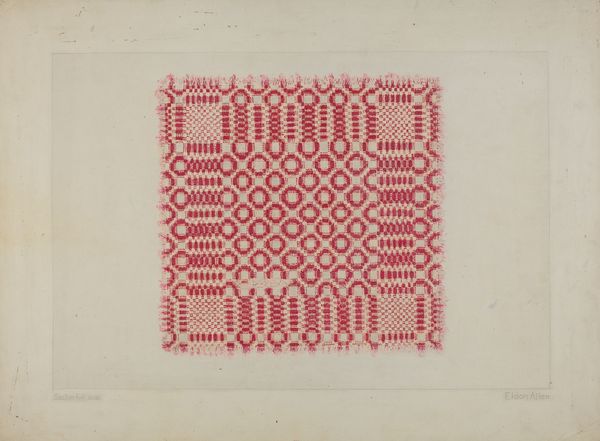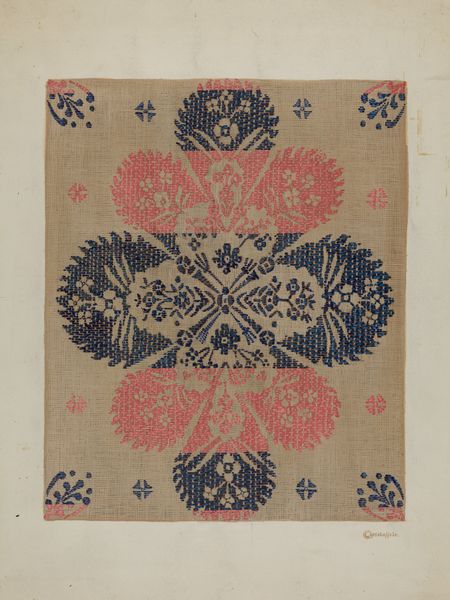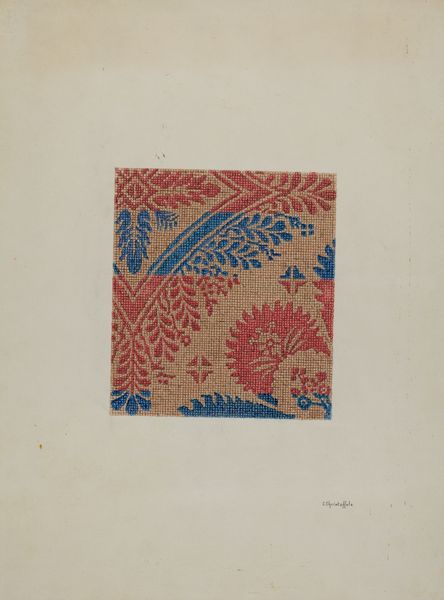
drawing, paper, watercolor
#
drawing
#
water colours
#
paper
#
watercolor
#
watercolor
Dimensions: overall: 35.4 x 26.4 cm (13 15/16 x 10 3/8 in.) Original IAD Object: 72" wide; 76" long
Copyright: National Gallery of Art: CC0 1.0
Curator: Before us, we have a watercolor and graphite drawing on paper by Rex F. Bush, titled "Coverlet" and created around 1936. Editor: At first glance, it radiates a subtle warmth with its pinks and the way the watercolor allows the texture of the paper to come through. It gives a really homey feel. Curator: Absolutely. What strikes me is the composition – how the repeated floral and geometric patterns create this visually rich surface. It's decorative but in a way that really emphasizes formal relationships. Editor: The fact that it's a coverlet design made during the Depression era suggests something beyond mere decoration. Think about the economic hardships, the desire for comfort and beauty amid difficulty... craft provided an important source of resilience for communities facing marginalization and limited access. Curator: Yes, but let’s consider how the arrangement works. The radial symmetry of those stylized flower motifs… and the border design with the highly geometric trees, their near mirror symmetry gives stability. There’s a tension here: organic versus inorganic. Editor: Right, I see that contrast and think of the era's prevailing social ideals too: women as homemakers, their creativity often confined to domestic spaces and the politics woven into textiles produced at home. How it becomes coded with those narratives, aspirations, even resistance through these patterns and repetitions. Curator: The texture made me pause because in many ways that grid structure mimics actual weaving, the paper functioning as cloth and the brushstrokes simulating thread. Editor: That simulated weave adds a layer – craft aspiring to become art; functional design holding expressive power and speaks to Bush’s project which engages not just domestic interiors, but what it means to visualize labor and production as part of broader cultural practices of art. Curator: In short, through its interplay of color and form, Bush captures what Roland Barthes might describe as the inherent pleasure in the "grain" of the artwork. Editor: I would emphasize the power of Bush's chosen subject which engages those critical questions about gender, domesticity, class through his representational approach, highlighting the expressive and cultural function of domestic handcraft in his era.
Comments
No comments
Be the first to comment and join the conversation on the ultimate creative platform.
